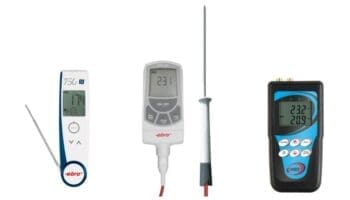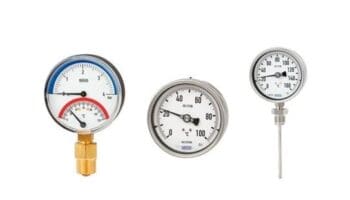Thermometers
It is a device that measures temperature or temperature gradient. Applications in technology, industrial process monitoring, meteorology, medicine and scientific research. The thermometer has two important elements:
a temperature sensor that changes with a change in temperature
some ways of converting this change into a numerical value
Thermometers are widely used in technology and industry for process monitoring, meteorology, medicine and scientific research. Some of the principles of the thermometer were known to Greek philosophers 2 000 years ago. As Henry Carrington Bolton (1900) noted, “the development of the thermometer from crude toy to precise instrument took more than a century, and its early history is burdened with erroneous claims which have been repeated with such dogmatism that they have received a false stamp of authority. The Italian physician Santorio Santorio (Sanctorius, 1561-1636) is often credited with inventing the first thermometer, but its standardisation has been completed. in the 17th and 18th century. In the first decades In the 18th century in the Netherlands, Daniel Gabriel Fahrenheit made two revolutionary breakthroughs in the history of thermometry. He invented the living silver thermometer in glass (the first widely used, accurate, practical thermometer) and the Fahrenheit scale (the first standardised temperature scale in widespread use).
While a single thermometer can measure heat levels, the readings on two thermometers cannot be compared unless they correspond to an agreed scale. Today, there is an absolute thermodynamic temperature scale. Internationally agreed temperature scales are designed to approximate this accurately, based on fixed points and interpolating thermometers. The most recent official temperature scale is the 1990 International Temperature Scale. It ranges from 0.65 K (-272.5 °C; -458.5 °F) to about 1,358 K (1,085 °C; 1,985 °F).
Vir: Wikipedija 01/2021


